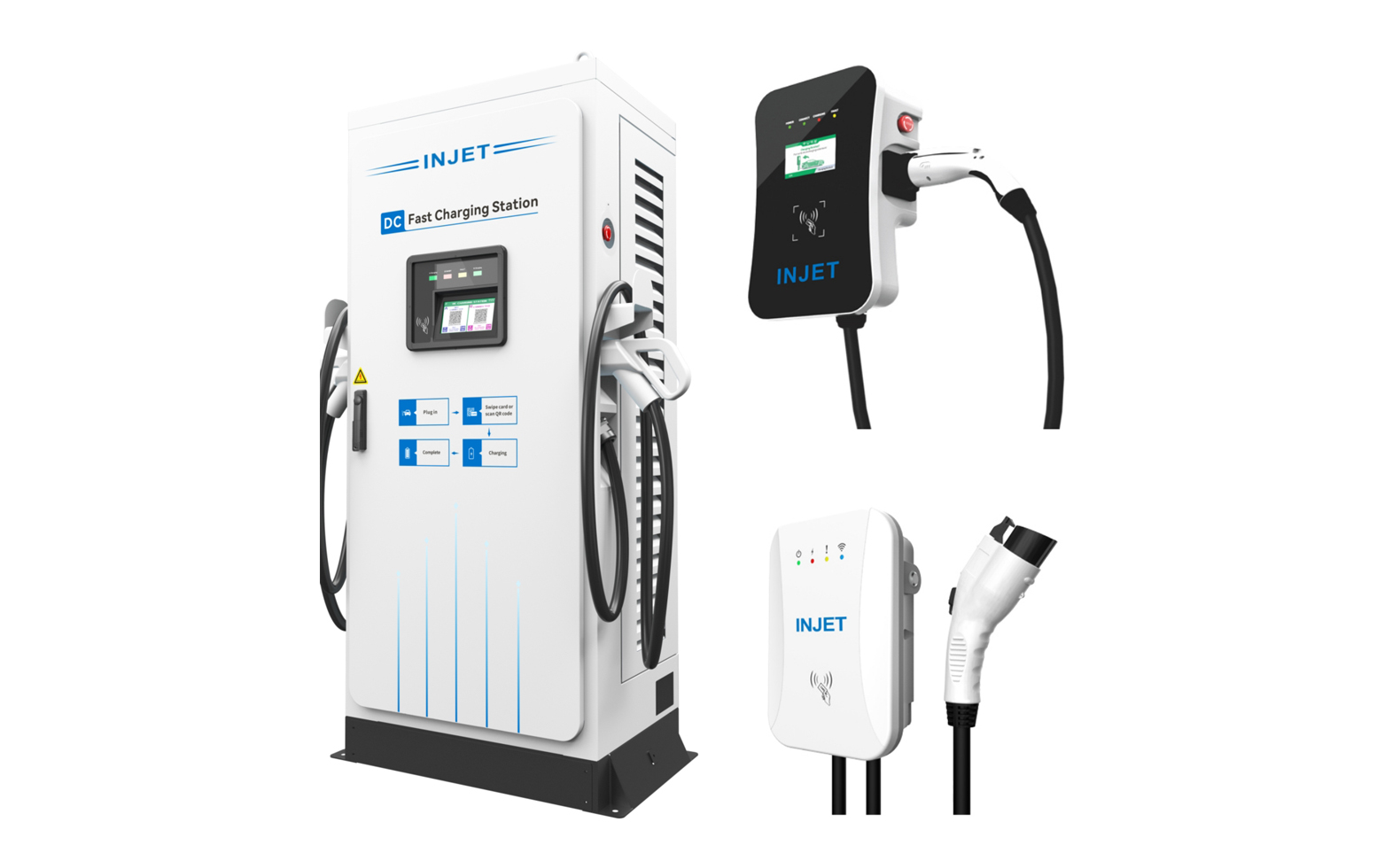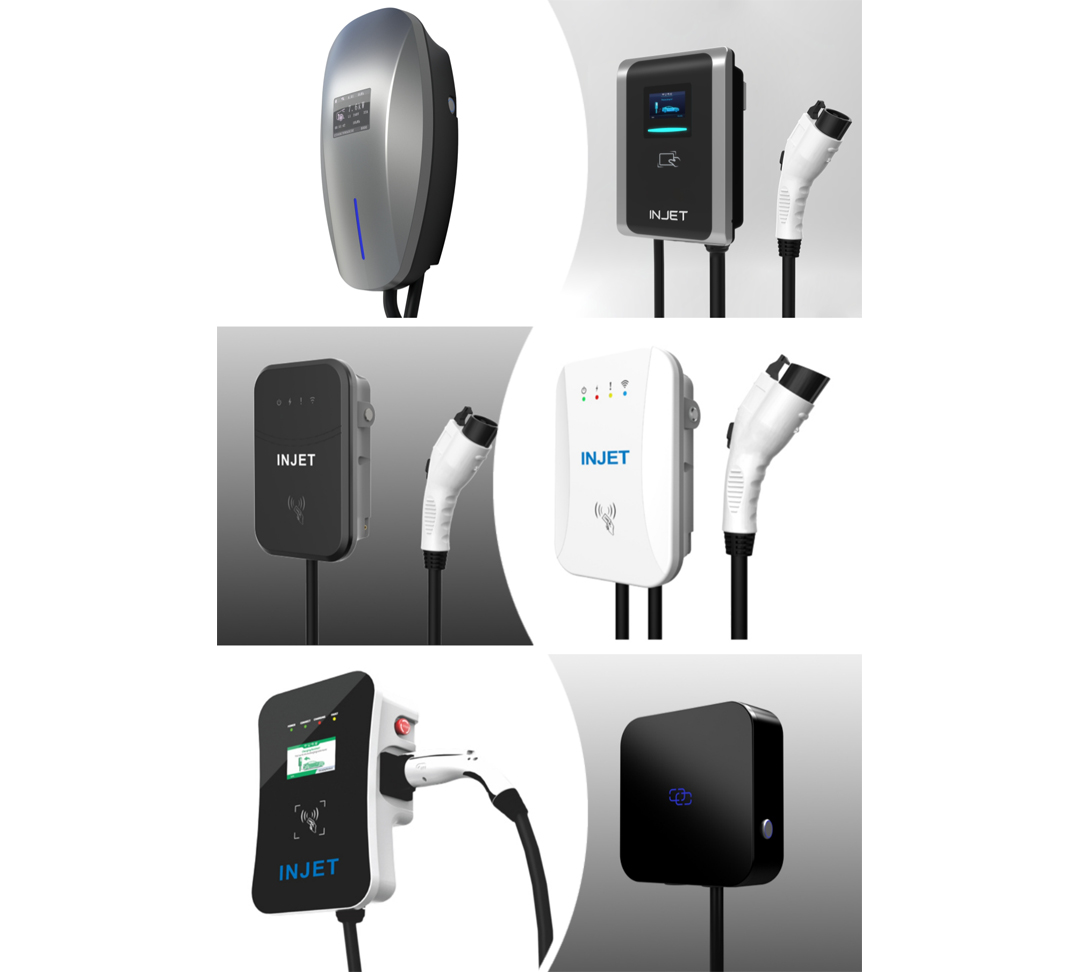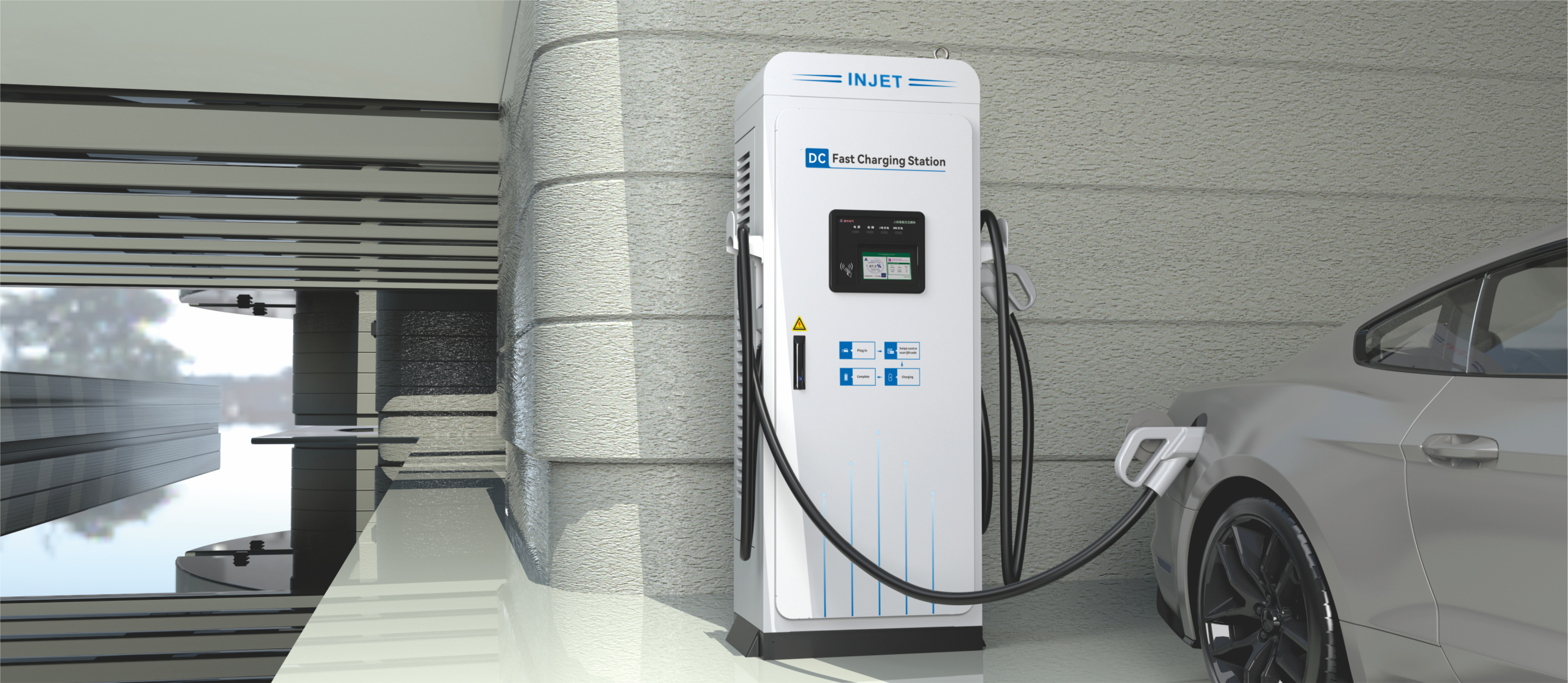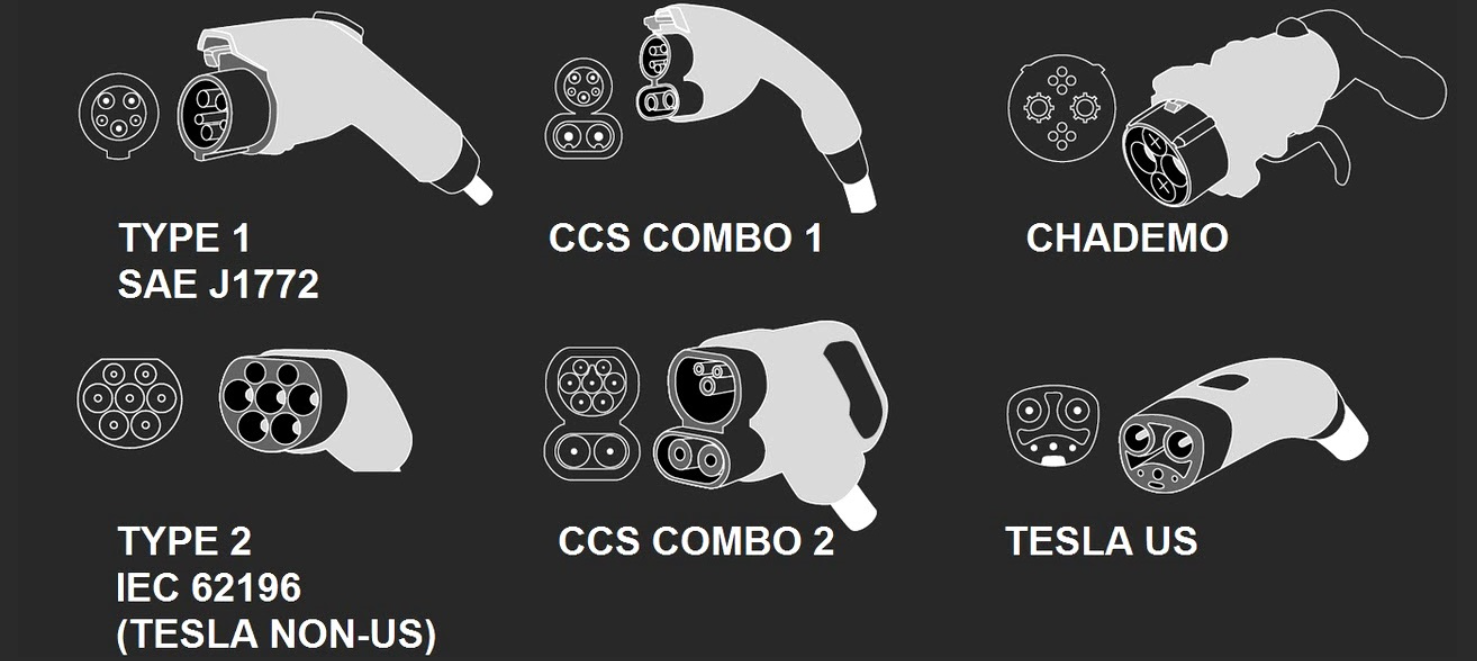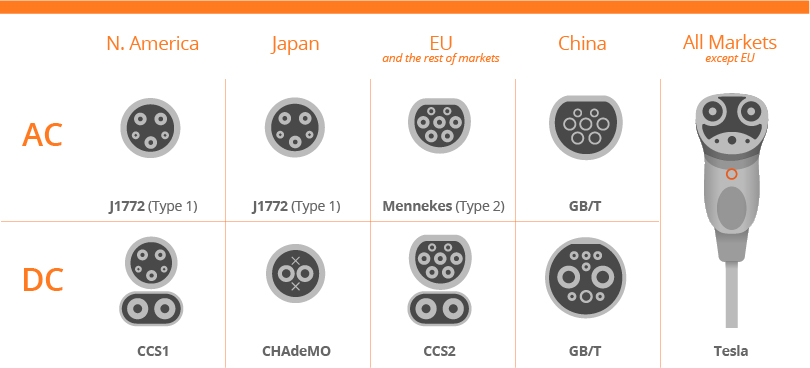The electric vehicle (EV) industry is experiencing a significant development that is set to drive the widespread adoption of EVs. Groundbreaking advancements in AC and DC charging equipment are paving the way for faster and more convenient charging options, bringing us closer to a future of sustainable and emission-free transportation.
AC charging, referred to as Level 1 and Level 2 charging, has traditionally been the primary method for EV owners. These charging stations can commonly be found in homes, workplaces, and parking facilities. The popularity of AC chargers stems from their ability to provide a smarter and more convenient overnight charging solution. EV owners often prefer to charge their vehicles at night while they sleep, which not only saves time but also reduces electricity bills. However, continuous efforts to enhance the charging experience have resulted in significant improvements in recent times.
(Full range of INJET AC EV charger products)
On the other hand, DC charging, commonly known as Level 3 or fast charging, has revolutionized long-distance travel for EVs. Public DC charging stations positioned along highways and major routes have played a crucial role in alleviating range anxiety and enabling seamless intercity journeys. Now, innovative DC charging equipment is poised to revolutionize the fast-charging experience.
(INJET DC EV charging station)
In a major stride for the EV industry, a wide range of charging options has emerged, expanding compatibility between EVs and charging infrastructure. As the demand for EVs continues to surge globally, ensuring seamless charging experiences for diverse vehicle models has become a top priority.
As EVs gain momentum as a sustainable transportation solution worldwide, an array of charging connector types has emerged to accommodate diverse vehicle models and charging infrastructure. These connector types play a crucial role in facilitating efficient and reliable charging experiences for EV owners. Let's delve into the current EV charger connector types that are widely used around the world:
AC charger connectors:
Type 1 Connector (SAE J1772): Also known as the SAE J1772 connector, the Type 1 connector was initially developed for the North American market. Featuring a five-pin design, it is primarily used for Level 1 and Level 2 charging. The Type 1 connector is widely utilized in the United States and is compatible with many American and Asian EV models.
Type 2 Connector (IEC 62196-2): Commonly referred to as the IEC 62196-2 connector, the Type 2 connector has gained significant traction in Europe. With its seven-pin design, it is suitable for both alternating current (AC) charging and direct current (DC) fast charging. The Type 2 connector supports charging at various power levels and is compatible with most European EV models.
DC charger connectors:
CHAdeMO Connector: The CHAdeMO connector is a DC fast charging connector primarily used by Japanese automakers such as Nissan and Mitsubishi. It supports high-power DC charging and features a unique, round-shaped plug design. The CHAdeMO connector is compatible with CHAdeMO-equipped EVs and is prevalent in Japan, Europe, and some regions in the United States.
CCS Connector (Combined Charging System): The Combined Charging System (CCS) connector is an emerging global standard developed by European and American automakers. It combines AC and DC charging capabilities in a single connector. The CCS connector supports both Level 1 and Level 2 AC charging and enables high-power DC fast charging. It is becoming increasingly popular globally, especially in Europe and the United States.
Tesla Supercharger Connector: Tesla, a leading EV manufacturer, operates its proprietary charging network known as Tesla Superchargers. Tesla vehicles come with a unique charging connector specifically designed for their Supercharger network. However, to enhance compatibility, Tesla has introduced adapters and collaborations with other charging networks, allowing Tesla owners to utilize non-Tesla charging infrastructure.
It's important to note that while these connector types represent the most prevalent standards, regional variations and additional connector types may exist in specific markets. To ensure seamless compatibility, many EV models come equipped with multiple charging port options or adapters that allow them to connect to different charging station types.
By the way, INJET offers chargers that are compatible with most global Electric Vehicle charging interfaces. With INJET, EV owners can enjoy all the functions they desire. The Nexus series (US) provides AC chargers for US standards, suitable for all EVs that comply with the SAE J1772 (Type 1) standard, and has received UL certification for EV chargers. The Swift series offers AC chargers for both US and European standards, fitting all EVs that comply with IEC62196-2 (Type 2) and SAE J1772 (Type 1) standards, and has obtained CE (LVD, RED), RoHS, and REACH certifications for EV chargers. Lastly, our Hub Pro DC charger is suitable for all EVs that comply with IEC62196-2 (Type 2) and SAE J1772 (Type 1) standards. For more details on the product parameters, please click Here.
